How to Hold a Cello Bow
The cello is a beautiful instrument, so versatile and unique, and we are proud to have Mike Block join ArtistWorks as our new latest instructor. As someone with an extensive background in teaching people how to play cello, Mike often stresses the importance of fundamentals. Here we'll take you through a lesson on how to hold a cello bow, which is very important to do properly before learning more advanced techniques.
To begin, start with your right hand up, palm facing out. It should feel as natural and tension free as possible.
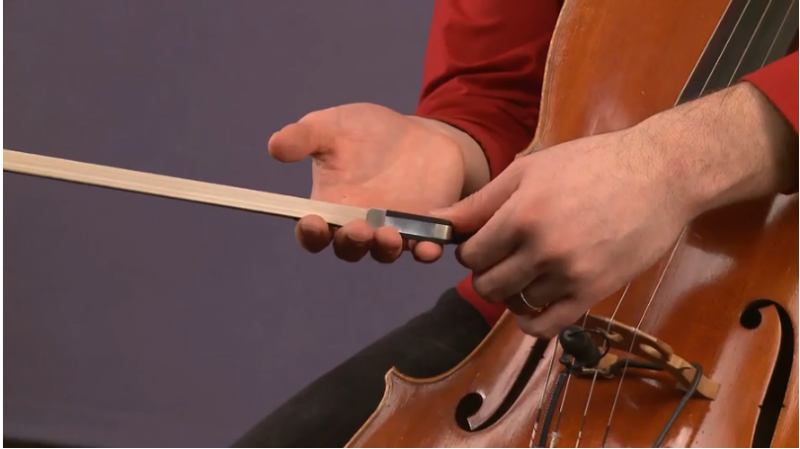
With your left hand, place the Frog of the bow facing to the right, in the second knuckle of the fingers. Then place the stick of the bow to rest in the second knuckle, with the fingers hanging out over the edges.
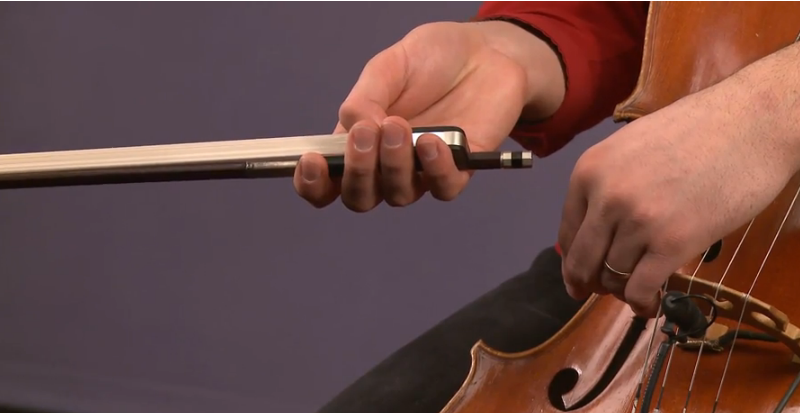
Next, very naturally curl the fingers in to pull the bow toward the palm. The thumb should touch where the Frog meets the stick of the bow, right around the grip.
You want the fingers to be comfortably spaced on the bow, as if your hand was just hanging naturally. The idea is to have very small windows in between the fingers, but if they are too close you will lack stability.
Try to use a natural spread of the fingers to get just the right amount of spacing.
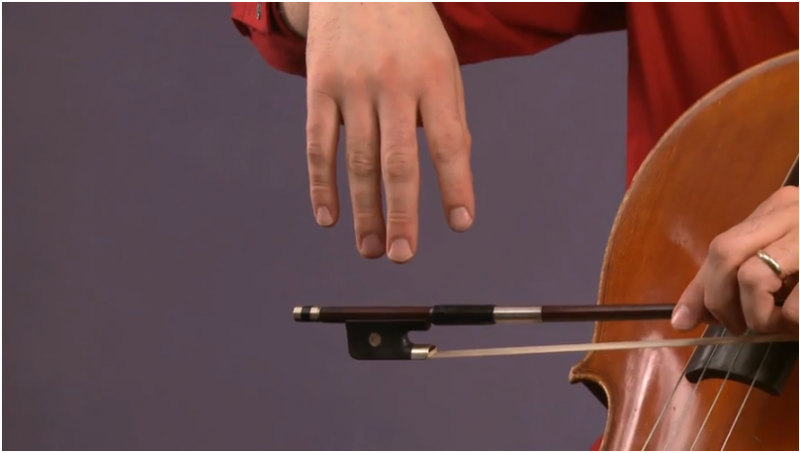
It's natural when learning cello to want to stretch out the first finger and pinky on the bow, creating the widest foundation possible. While this will give you a totally solid bow hold, it lacks any flexibility - which is exactly what you need in order to make smooth bow changes (not to mention other cello techniques as you progress).
So remember, don’t let your 1st finger move out toward the tip. Instead, keep everything close together. It's also important to keep your thumb bent, so that you have flexibility in the bow hand.
The best approach is to keep your thumb right where the Frog meets the bow stick.
If you keep your thumb straight, you’ll lose that flexibility.
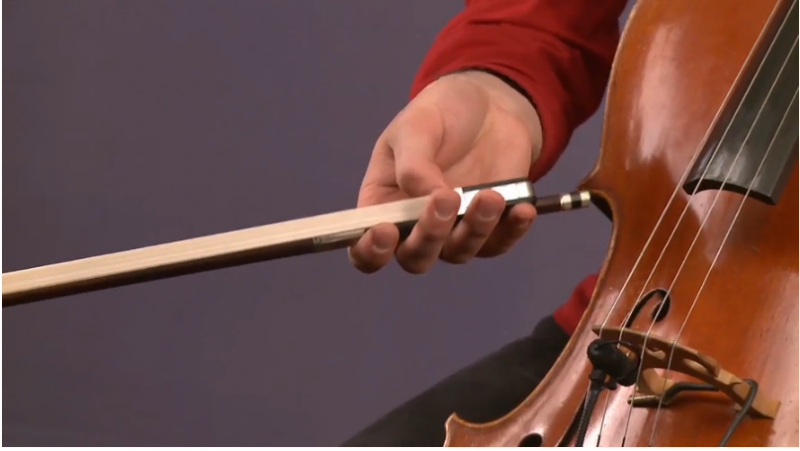
Here’s a tip about where to rest the pinky: right on the little dot in the center of the Frog. Just remember, on the eye of the Frog!
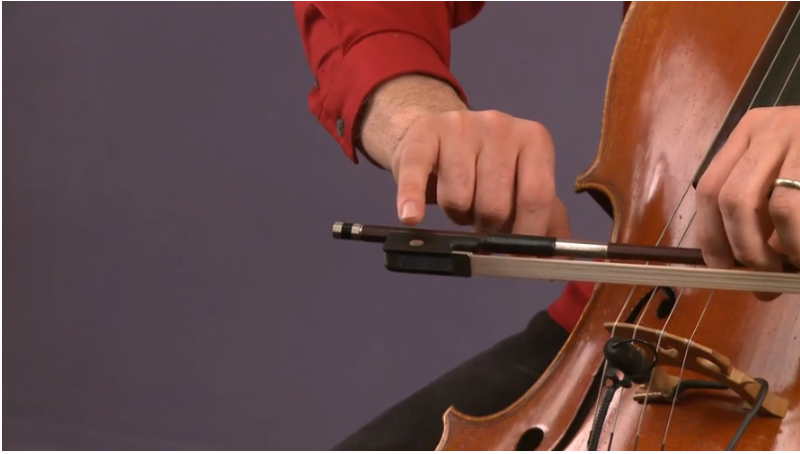
The 3rd finger next to the pinky should rest right on the metal strip where the bow meets the Frog.
The 2nd finger should rest on the of the bow - while the 1st finger does not touch the hair as much.
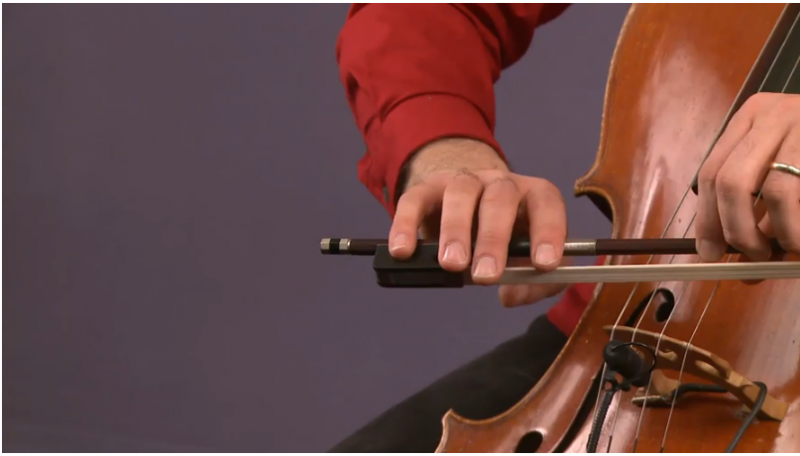
Every bow grip is different, so don’t worry if yours does not line up exactly like Mike’s. But be sure to start with the right palm facing up as the pictures demonstrate. The bow stick should go in the 2nd crease of the knuckle.
Next, flip it around on the string and you're ready to play.
The bow arm should have a continuous downward slope from the shoulder through the elbow, the wrist, the hand, and into the bow.
It should NOT look like this:
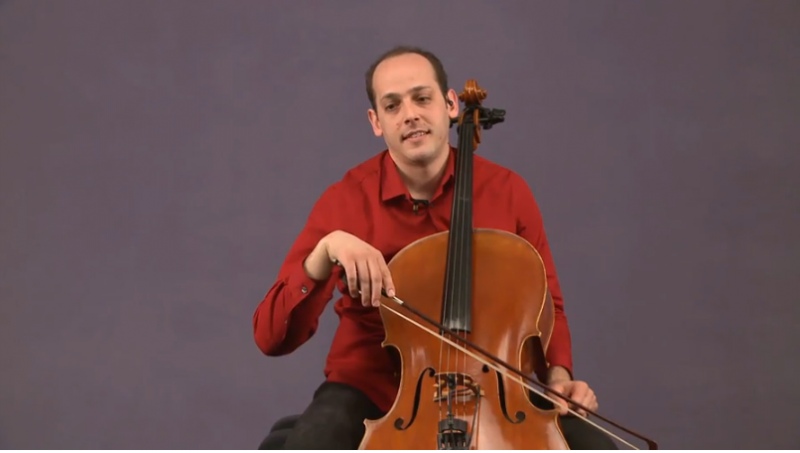
Or this:

Instead, do it like this:
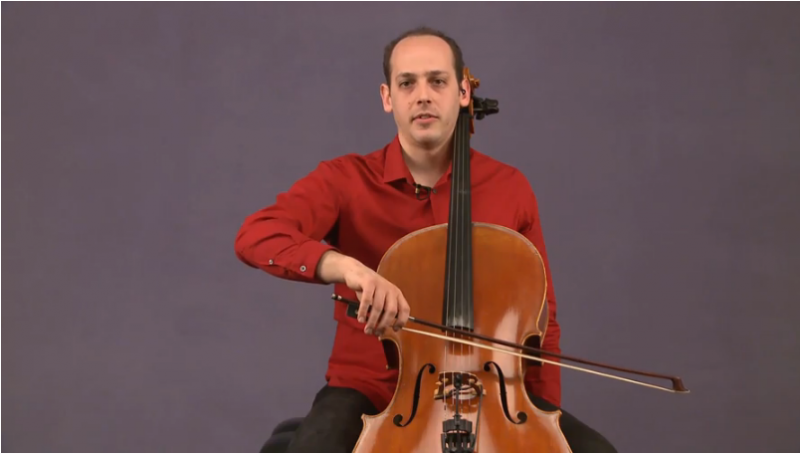
Now to make some noise. Let's start with the bow on the A String, which is the highest string on the cell - all the way to the left.
Practice pulling the bow to the right, this is called a "down bow."
Don’t worry about how long it takes, right now we just want to do it was relaxed as possible. When you get to the tip of the bow, stay there without lifting it, and then take the bow back up the strings (aka, "up bow"). When you get to the Frog, freeze so that all of the weight of the arm is sinking into the string.
Next, try a full down bow and up bow together. When you get to the tip, practice staying there without lifting it and then coming back for the up bow.
So how much of the bow hair should be contacting the string?
You can play with a style called “flat hair” so that all of the bow hair is connecting the string. Or, it’s also common to play with “slightly slated hair,” where the hair is turned out toward the ground a bit. For this style, not all the hair connects with the string.
Now for our next exercise, we’ll play a down bow and an up bow on each string. Since we already did the A String, now we’ll move one over to the right, the D String.
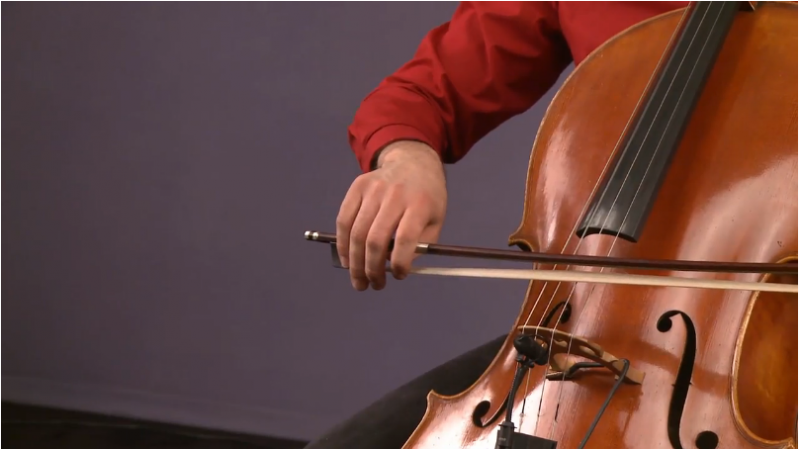
And that's all there is to it! But remember, this is just the beginning of the journey to learning cello... and the possibilities for where you take your own music are endless.
More Cello tips:
- Slant your bow hair slightly, that will help create the smooth angle in your bow arm.
- Remember to put the bow on the Frog and relax all of your arm weight into the instrument.
- Drop your shoulder so you have a smooth, gentle slope all the way into the string.
- The lower strings require more arm weight in order to get their thicker strings to vibrate.

Learn how to play cello online from Mike Block at ArtistWorks and get direct feedback on your playing through Video Exchange®.
Click here for free sample lessons!
Related Blogs:
- 4 Famous Cello Pieces You Should Know
- Cello Lessons with Mike Block Now Available
- How to Avoid Cello Repair with Proper Maintenance







Comments